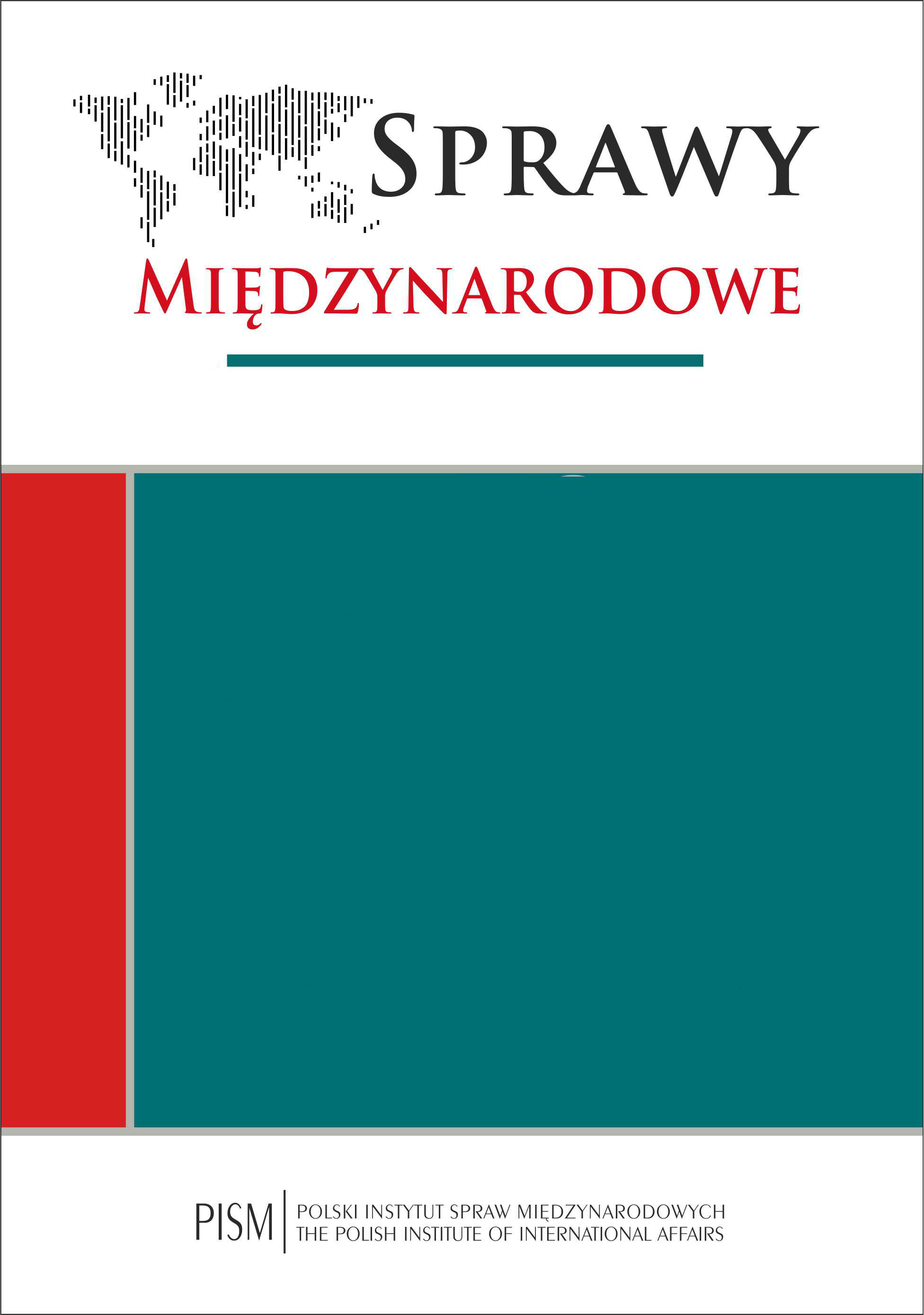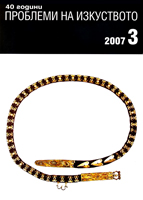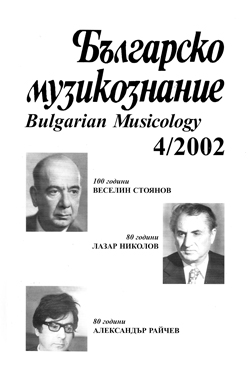
We kindly inform you that, as long as the subject affiliation of our 300.000+ articles is in progress, you might get unsufficient or no results on your third level or second level search. In this case, please broaden your search criteria.


This article is the first publication on a unique reliquary with narrative scenes from a Khazarian grave in the Lower Don Basin. The authors pay particular attention to the characteristic epic scene representing a battle between a warrior on horseback and a foot soldier.
More...
This article characterizes decorative art in Khazaria in connection with the development of the universal plant motif “the lotus palm tree” in Khazarian (Saltov) toreutics.
More...
Sacral light in Byzantine painting reveals the epiphenomenal nature of God It presents itself as a typical emanation of God - both accessible and inaccessible As an emanation of God, this epiphenomenal light blinds the physical eyes of the beholder called upon the rare occasion of witnessing it, only to open their inner, spiritual eyes. This is experienced by the Apostles Peter, John and James during the transfiguration of Jesus on Mount Tabor; it is also experienced by the future Apostle Paul on his way to Damascus. The Holy Spirit descends in the form of flames to light the initiated so that they become holy men or saints. Painting structured through epiphenomenal light reveals a space that bears the characteristics of God. The essence of sacral space is not revealed to a mere look, because each “icon”, each sacral image, can only become accessible through contemplation. Epiphenomenal light builds the space of the painting by dispelling the darkness and, respectively, the shadows. The space of a sacral painting does not need to be modelled through light and shade; it fits into a universal two-dimensional form. The nature of epiphenomenal light reveals two different ways to depict God. Because of God’s sensual inaccessibility, He is not depicted as a specific visual unit; instead, God is approachable through the painting space itself, built from light. The only opportunity to localize God is by means of depicting His second face, Jesus Christ. The emanation of God into light signifies that He is ever present in the structure of the painting’s space. Thus, no image ever leaves the realm of the Father. The two ways to present God through epiphenomenal light reveal two types of iconography. The first type is engaged with specific images and pays special attention to narration, whereas the second type relates to the structure of space itself.
More...

Among archaeological sites found along the Lower Volga, Samosdelka holds a unique place, since the study of this site to a large extent changed our understanding of the historical development of this region. Until recently it was thought that towns appeared in the territory of the Lower Volga only at the beginning of the time of the Golden Horde in the 13th-14th centuries. Data from written sources was supported by exceptionally scarce archeological material. Similarly, the city of Saksin from the 12th century was also not able to be located, even though it is also known from written sources. As a result of archeological excavations it has become clear that Samosdelka appeared during the 11th c. and existed continuously until the 1430 s. Its core population was made up for Bulgars and Togoz who had emigrated there from the lower Syrdarya River. The ceramics from Samosdelka are striking in their abundance and variety of forms. One extremely interesting vessel, a ceramic rhyton, has been found. In its morphology the rhyton from Samosdelka is closest to the vessels of Type I from Fergana (according to G. Al Brykina). Similar vessels have also been found at the Tashkent oasis, as well as in Rea and Afghanistan. Despite this similarity, however, the Samosdelka rhyton has a number of distinguishing characteristics that make it possible to suggest that it has local origins. Most likely it originated in the layers from the 9th-10th centuries, since similar vessels from later times have not been found. It is also of interest due to the fact that it is the second ceramic rhyton found in Eastern Europe.
More...
Reviews / Respect for Icons in Medieval Russian Art
More...
The author examines five artefacts found on the territory of present-day Bulgaria. They date from the 10th-12th centuries, and using various materials and different styles they all represent the image of the Gorgon Medusa. Heretofore unknown facts are included regarding the popularization of this personage from Ancient Greek mythology through the Slavic translation of the Chronicle of Ioan Marala, which was written in Bulgaria at the beginning of the 10th century. In the search for evidence of the image’s apotropaic significance, attention is focused on two ritual breads from the 19th century there were very unusual in terms of their decoration. It is the suggested that the stamped text IC XC NI KA arranged in a circle with an usual cross around it is similar to the lead amulets with the head of the Gorgon, whose hair is of snakes. The Mesoamerican region is also noted as another example of a region where masks of a human face with the tongue sticking out are widespread. The preservation of this gesture through the centuries up until modern times reminds us of the gesture of sticking out one’s tongue, the best known contemporary example of which is the popular photograph of Albert Einstein.
More...
The exhibit „Medieval Treasures of Bulgaria” is organized by the Archaeological Museum in Varna. The rich collection from Varna forms the heart of the exhibit, with participation by museums from Montana, Veliko Turnovo, Shumen, Preslav, Turgovishte, Silistra, Rusa, Dobrich and the National Art Gallery in Sofia. The goal of the exhibit is to show world- famous artifacts, as well as to exhibit new finds or lesser-known works dating from the 9th-10th and the 13th-15th centuries. The exhibit organizers interpret the concept of “treasure” in a wider sense, understood as something valuable, not only as precious metal, but also as art. Thus, the exhibit includes a wide variety of works created by master goldsmiths and toreutists, as well as by icon painters and potters. Ornaments and finery occupy a significant place in the exposition. Some of them were found, after having been hidden away as treasures, while others were discovered as funeral offerings in excavated necropolises. The finest specimens by medieval goldsmiths are displayed. Some of the decorations reflect the style of the Byzantine East, while others reveal the influence of the European West. In this exhibit at the Archaeological Museum one can witness part of the brilliance of medieval Bulgaria.
More...






